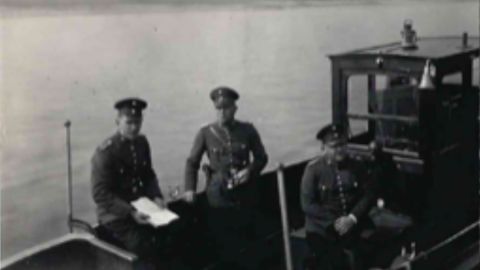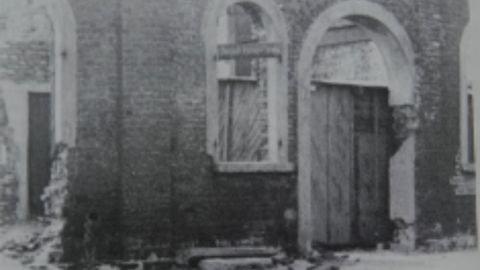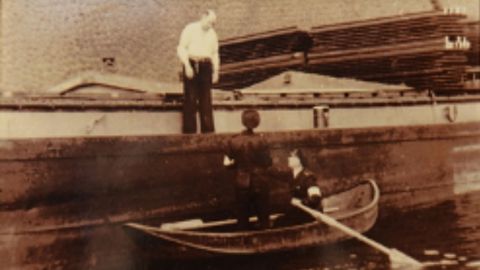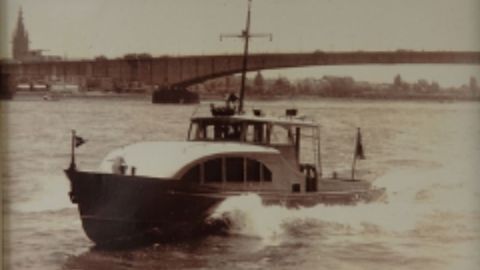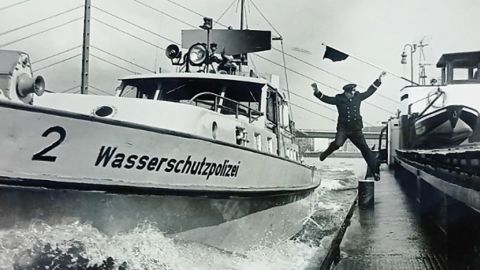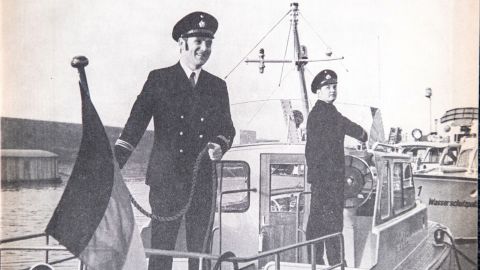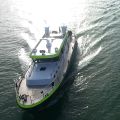The birth of the Reichswasserschutz (R.W.S.) was not an easy story. Initially, river flotillas under the leadership of naval officers took over the tasks. It was formally founded on October 1, 1919. In 1928, "Westermanns Polizeiatlas" noted the following about its history: "... emerged from a number of voluntary motorboat flotillas that had formed after the end of the war to combat the criminality that was also occurring on the water at the time ..."
The R.W.S. was the first ever imperial police authority, but de facto only existed in Prussia and Saxony. As a result of the insecurity prevailing in the Rhine River region after the First World War, the state of Prussia decided to establish the Rhine Police on August 15, 1920. The Düsseldorf detective inspector and later police major Wilhelm Ernst Lang was commissioned to establish a police force on the then Prussian stretch of the Rhine and Main, to develop it in terms of organization and personnel and to train and equip it for the special service on the water.
The police took up their duties in August 1920, initially forming three Rhine police districts:
- Rhine police district: Prussian Main and Rhine from Mainz to Kaub (based in Hochheim);
- Rhine police district: Kaub to Hitdorf (based in Linz);
- Rhine police district: Hitdorf - NL border (based in Duisburg)
On December 5, 1921, the "Inter-Allied Inland Navigation Commission" granted permission to operate on the Prussian Rhine.
In the beginning, only three boats were available for patrol duty on the water for around 360 kilometers of river. By 1926, the Rhine police already had six police boats. In 1927, the boats "Rheinpolizei I-VIII" were finally in use. In the early years, members of the Rhine Police were forbidden by the Allies to carry weapons. Until 1931, the Rhine police officers served in civilian clothes. In the same year, the Reich Water Police was dissolved on the basis of the "Ordinance on the Dissolution of the Reich Water Police" of March 26, 1931 and its previous powers were transferred to the federal states.
So much for a look back at the first ten years. With the restructuring of the German state along National Socialist lines, changes also began for the waterway police immediately after the "seizure of power" in 1933. As a first step, the Prussian Rhine Police was merged into the Prussian Water Police (under the name "Special Service Branch of the Water Police", official abbreviation "SW") as early as 1 April 1935 for the reorganization of the water police throughout the Reich.
The different lines of development of the R.W.S. and the Rhine Police had now been merged into the Prussian Protection Police. The final "enrichment" of the police as a whole was completed on 26 July 1937 with the reorganization of the Water Police throughout the Reich. A year and a half later, on September 1, 1939, Hitler's war of conquest and annihilation in Europe began. The water police were also involved in the preparations for this war. Presumably as early as January 1937 - but with verifiable certainty from March 1938 - it was involved in the targeted recording of its boat fleet for deployment and "external use" of the existing police boats.
After the official end of the war on May 8, 1945, the Rhine and the canal area were crammed with ship and bridge debris. On the entire stretch of the Rhine in what is now North Rhine-Westphalia, only one water police boat remained "reasonably undamaged".
The British military government, represented by DAIG Colonel Thompson, pressed ahead with the construction of a new fleet of boats. On August 23, 1946, the state of North Rhine-Westphalia was founded. From 1947, the Water Police was directly subordinate to the Ministry of the Interior of North Rhine-Westphalia and thus constituted a state police authority. On February 17, 1951, the first new water police boat after the war was launched at the Bausch shipyard in Cologne. The boat was almost 16 meters long and equipped with a 175 hp engine and was capable of 20.5 km/h upstream and 34 km/h downstream.
Several police organization reforms later, the Water Police Directorate is now docked at Duisburg Police Headquarters. From there, the WSP ensures safety on the approx. 900 kilometers of navigable waterways in the state with 260,000 ship movements per year. It monitors shipping and keeps the waterways clean. The WSP is present at nine locations and has its own Central Criminal Investigation Department. The directorate maintains stations from Bonn to Emmerich in the Rhine area and from Essen to Minden in the canal area. It is equipped with 275 officers and 22 boats.
